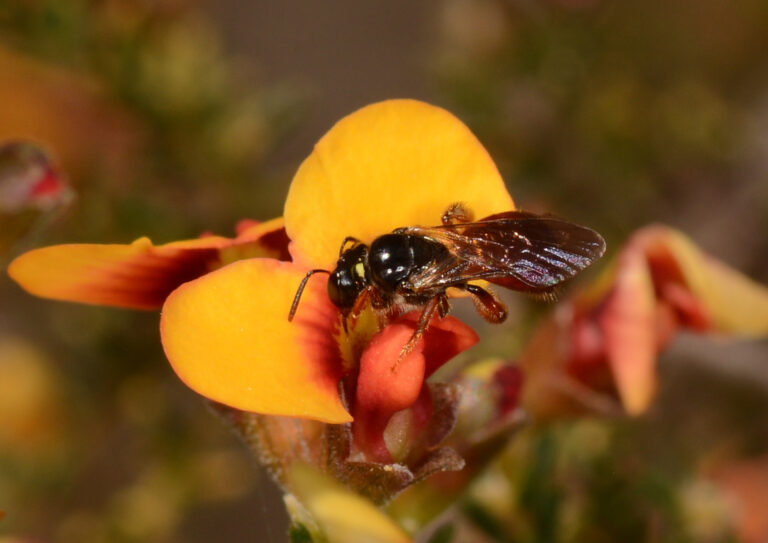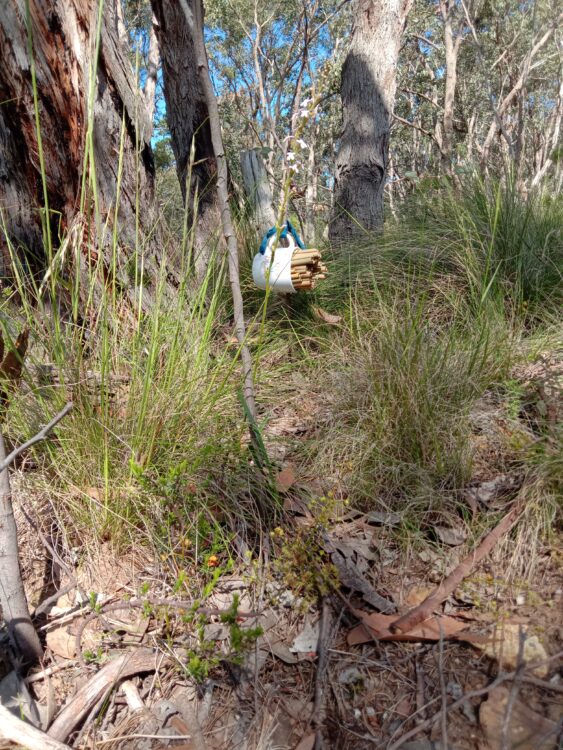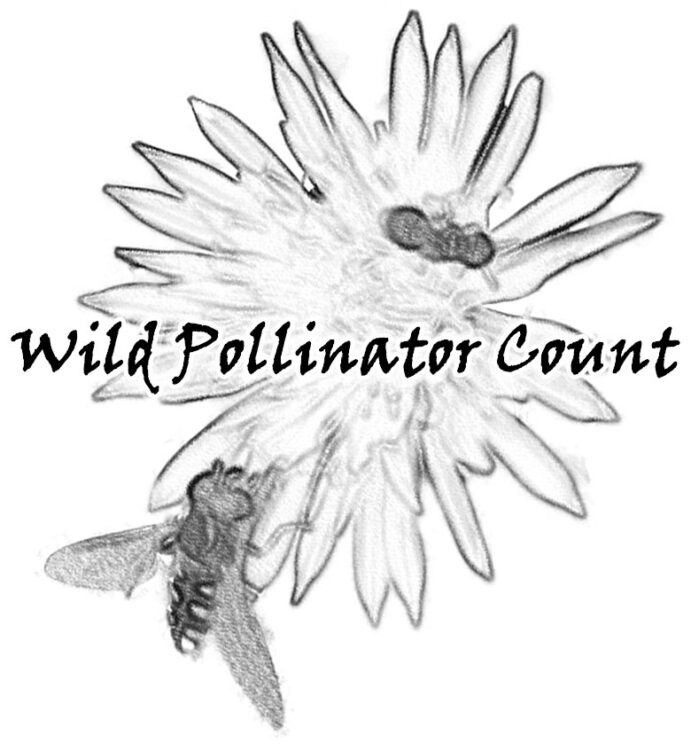By providing food and water in your garden, you can encourage native bees to visit. By making them a hotel, you can encourage them to stay!

Around 30% of Australia’s solitary and semi-social bees nest in pithy stems or in holes in timber abandoned by boring insects. As wild habitat shrinks, you can help native bees in your area by making a Bee Hotel using short sections of bamboo and timber blocks with holes drilled in them, beautifully demonstrated by UCLN Vice-President, Michael Nott in this video!
Bee Hotels will boost pollination in your garden
Many solitary bee species pack pollen in loose dry balls on their legs or under their abdomen to carry it back to their nests, whereas social bees moisten their pollen with nectar to pack it on their legs. The dry pollen carried by solitary bees may pollinate other flowers better than the moistened pollen carried by social bees, making solitary bees in your Bee Hotel particularly good pollinators for your garden plants (watch our upcoming video by UCLN Secretary Adrian Robb on the benefits of native pollinators in your garden).
Keep a watchful eye on your pollinators – some solitary and semi-social native bees are able to do a special kind of pollination called ‘Buzz Pollination‘ which Honeybees and our Stingless Bees cannot do. Many crops including tomatoes, eggplants, strawberries and blueberries require Buzz Pollination so that their fruit can develop properly. To learn how to ‘site’ pollinators and record your sightings watch our upcoming Video by UCLN President John Walter.
It is important to note that the females of all solitary and semi-social native bees are able to sting, and that it is possible to be allergic to the sting of some of our native pollinators. These species are not aggressive as they do not have a queen or large nest resources to defend. You would have to actually grab or step on one of these bees to make it sting you. In addition, many are too small to deliver an effective sting to humans.
Getting down to business
For sustainability, Michael chose materials that were recycled or scrap when he built his Bee Hotels. Always choose non-toxic materials and avoid timber that has been chemically treated, and composite materials such as cardboard, particle board or chipboard for the frame, as these disintegrate in wet weather.
Lengths of bamboo make great nests for Resin Bees and Leafcutters and are readily accessible at your local hardware store. Cut the bamboo so that the piece has one open, cut off end and one end sealed by a node (see Michael’s video for a visual explanation). The cavities need to be about 10 to 15 cm long and should be between three and 13mm wide inside the cane. Native bees are unlikely to use bamboo holes that are wider than 10mm but native wasps and some predatory insects will use them.
Your native bee hotel should face between the north and east, in a sunny to semi-shaded position that is sheltered from the wind and rain, one to two metres off the ground. Place it in a garden full of bee-friendly plants that provide abundant nectar and pollen throughout the year.
For Resin Bees, Leafcutters and Reed Bees, make many small bee hotels and set them up in different parts of your garden. This mimics the natural situation – in the bush native bees have scattered nest sites.
Provide a water supply for the bees. Partly fill a shallow water dish with pebbles so that the bees do not drown in it (watch the upcoming Video by UCLN Treasurer, Chris Gymer on how to create a pollinator watering station).
Most importantly, remember that insecticides will kill native bees as well as garden pests. Try to avoid using insecticides in your bee-friendly garden. If you really have to use an insecticide, avoid spraying the blossoms and use the chemical in the very early morning or late afternoon, when bees are not foraging.


